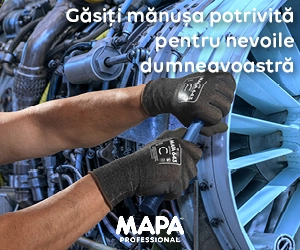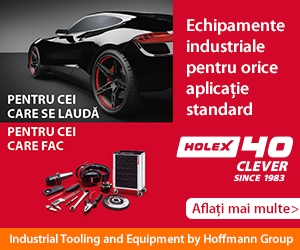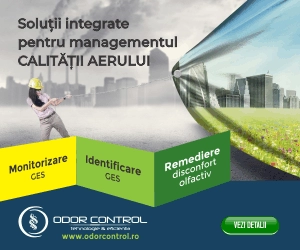The current experience and training of Romanian OHS professionals

This is a study about the current experience and training of Occupational Health and Safety (OHS) professionals in Romania. Methods: Questionnaires have been chosen for the research since it is important to be objective, while reflecting the values, perceptions and interests of the respondent. Participants: The population of interest is the whole OHS profession. A sample was drawn through ARSSM (Romanian Association for Health and Safety) members - these being the boundaries of the study. Ethics: Ethical dilemmas around access, who and how are accessed, was resolved by working with and for a professional association. Conclusions and recommendations for future research: The study shows that being an OSH practitioner isn`t yet a well-developed profession in Romania, but outlines us the necessary steps needed to become professionals. There are some recommendations for the future of OHS practitioners behind this study, first being ENSHPO or EUSAFE certification for those wishing to have their experience acknowledged, although all the participants could easily be included in the EurOSHM (manager) category - they fulfill all the requirements.
The research evaluates the changing training needs in line with the development of health and safety and its integration in the work system, from the appearance of the first legislative provisions in 1864 until the present time, in the context of the much needed evolution and alignment to the European Directives.
The OHS (Occupational Health and Safety) occupation is a relatively new profession in Romania, dating from 1998 and having many changes since then. Ferguson and Ramsay reviewed the definition of a profession (an occupation requiring specialized skills) and this research will evaluate the existing knowledge from courses and training and career development needs, will discuss future steps that may be necessary to be a professional (working in a recognized profession).
This research also aims to thoroughly analyze the transformation in the OHS field and present the current experience and training needs of Romanian OHS professionals. The aim of the research is also to help professionals to obtain answers about their daily practices that are best answered through systematic investigation, or the research process`.
The study is being undertaken by an insider, herself a practitioner, and therefore gains insights from experience but may be influenced by personal perception.
The objectives include:
- To review the ways of becoming an OHS professional, through literature highlighting the legislative requirements and competences with the EUSAFE Project (2010-2012).
- To evaluate the perception of Romanian OHS practitioners about the quality of their training and preference for delivering of future training (survey)
- To estimate the demand for development of a professional code of ethics for Romanian OHS professionals and to identify potential barriers (survey)
- To evaluate colleagues` professional experience and training level, in order to establish the current training needs of the Romanian OHS professionals.
In the past 25 years, Romania has gone through major political, economic, social and cultural transformations, all necessary in the context of Romania`s accession to the European Union (EU). The admittance in the EU, the alignment of national legislation and OHS standardization across Europe, forces the profession to reach faster the European requirements for quality and competence; the question that arises is: are the Romanian OHS professionals prepared?
The method
The questions raised by looking at ontology, what is there to be known? can be asked to find out where the practitioners started and how they accumulated their knowledge and experience comparing this to objective standards and discovering any gaps, with the purpose of creating the pattern of the perfect practitioner.
The development of a profession was examined from its very beginning to present time, including the legislative requirements.
Questionnaires
They consist of a written list of questions for gathering information, by asking people directly to discover things, and they are producing quantitative data.
Coding the data
The process of transforming words in numbers is called coding the data. Coding, in essence, entails the attribution of a number to a piece of data, or group of data, with the express aim of allowing such data to be analysed in quantitative terms.
Results
The age of the participants shows that the ones more interested in this research are of more than 50 years old (question no.1), a few of which are women (question no.2), with about 20 years of experience in health and safety (question no.3), all of them have a university degree (question no.4) and plenty of HSE courses (question no.5), one third of them are in this field before 1996 prior to Law no.90/1996 (question no.7), all of them are full time OHS practitioners and more than a half have their own consultancy company (question no.6).
The year of their authorization (question no.7) shows if they were examined by a commission of the Labor Ministry (a few of them were in a special position – they were members of Labor Inspection and the exams weren’t necessary), or had just submitted a file, what the distribution of participants is, based on the area of activities (question no.8) and their experience on areas of economic activities (question no.9).
Types of courses and their utility scale are presented by questions no.9 and 10 and also, other not so useful courses completed by the participants. If we are talking about courses and their ways of improving the training needs of the professionals, we can check question no.11 where the participants expressed their opinion about courses that require improvement. These three questions are very useful for professional trainers and their schools.
The Romanian OHS professional is also interested in continual professional development (CPD), ways of granting credits and utility of selected ways for CPD (question no.12 and no.13). The levels of competency established by the EUSAFE Project (2010-2012), manager and technician, are accepted by participants and they wish their years of professional experience to be validated not compared to education (question no.15).
The participants are very interested in certification by an international organisation like ENSHPO - knowing that ARSSM is an ENSHPO member, (question no.16) and they agree with Ferguson and Ramsay (2010:28) that certification is viewed as credible evidence of skill and knowledge within a field of professional practice.
The Romanian OHS practitioners are aware about the necessity of a voluntary code of ethics and they express very clear their point of view about this problem (question no.17 and no.18).
ENSHPO have the instruments for certifying skills and competencies, ARSSM as an ENSHPO member could certify members and others willing professionals. The study proved that Romanian practitioners easily meet the minimum requirements and criteria for eligibility of individuals for EurOSHM, standard:
- Many of them have a university degree or at least at Bachelor level
- All of them have plenty of occupational safety and health training courses at a professional level, more than the minimum required of at least 250 cumulative hours most of them examined
- The legal requirement in Romania for professional work experience first was 10 years and 5 years nowadays, more than the minimum required by ENSHPO, for at least two years full-time since the completion of the occupational safety and health training
- Many of them have done Continuous Professional Development (CPD), between 1998-2006, as it was a legal requirement and after that year, many of them have done other courses for improving their knowledge in a changing legislative environment. Some of them were participating in conferences and seminars without knowing that they were adding to their CPD experience.
- All of them agreed with the necessity of having a code of ethics and agreed to respect such a code.
If we are looking to minimum requirements and criteria for eligibility of individuals for EurOSHM (a university degree or at least at Bachelor level; occupational safety and health training courses at a professional level, at least 250 cumulative hours at least 120 hours examined; professional work experience for at least two years full-time since the completion of the occupational safety and health training; CPD) most of the participants fulfill this EUSAFE empowerment standard. It should therefore be justified the participants claim to be recognised as OHS practitioners at the European level by validation of their qualifications.
All participants could easily be included in the EurOHSM (manager) category, because they fulfill the requirements: they all have university degrees, they have attended OHS training courses of least 80+180 examined hours, they have experience of more than two years; the only issues that arise are continuous professional development courses and the lack of a Code of Conduct.
The image of the Romanian OHS professionals can be seen in the results from the first nine questions.
There are 25 university graduates, perhaps because having one was mandatory for doing post university studies (courses) with a length of 180 hours in health and safety. Former members of local inspectorate were required to have university studies for being an inspector, so all HSE practitioners have a high level of training.
An examination procedure done by a Ministry commission required some time for reviewing and acquiring knowledge, continual professional development (CPD), a necessary learning process for those involved in the empowerment procedure. This was a good way of selecting the best HSE professionals on specific areas of activities. When this type of examination was dropped it was an increasing number of practitioners (Inspectia Muncii, HSE, 2014) without specific economic domain of activities. Nowadays there are OHS practitioners with and without economical areas specialization and could be seen equally as a bad and a good thing, like we said, market will select them.
CPD
The Romanian OHS professional is also interested in continual professional development (CPD) and question no.13 proved this interest. If we are looking ways of granting credits and utility of selected ways for CPD we can check question no.14. These results could be the starting point for organizing CPD for OHS professionals in a different way than just doing another course.
All the 27 participants who answered question no.14 agreed the granting credits system by participating to conferences and workshops, as a way of accumulating knowledge and credits simultaneously. We could allege that the wider population of OHS practitioners is interested and very happy about CPD, about learning from others through workshops and conferences.
It was a time when attending courses was mandatory for CPD, but these days practitioners proved they have other wishes for improving their skills, knowledge and expertise.
This represents a good way for ARSSM and other similar organisations for developing and growing the number of members or finding other people interested of becoming member of a professional association by organizing conferences, workshops and OHS professionals meeting each others .
Article written by Cornelia Bohalteanu and published in the 2017 HSE Romania guide.






